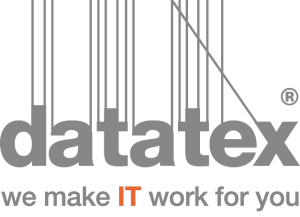Textile and Apparel ERP and Sustainability Practices
In today’s world, increasing awareness of sustainability becomes imperative for all industries, including textiles and clothing. The pressure to reduce environmental footprint is intensifying and companies in the textile industry are constantly seeking ways to improve their operations and to minimize their negative impact on the environment.
What is Environmental sustainability?
Sustainability is a process that requires us to perceive our lives as integral and indispensable parts of a global entity, and accordingly to act within social, economic, and environmental well-being frames. The goal of sustainable approach is to get every organization to take its environmental and social impacts into account with every business decision throughout the value chain so that it can stay within planetary renewable resources and economic and social values.
Ecological footprint in apparel and textile
According to the scientific studies, textile and fashion industry are responsible for significant percentage of global carbon emission, expressed in form of “an ecological footprint” which measures the impact of human activity on the environment and natural resources consumption.
Water and energy consumption, waste, CO2 emissions, harmful chemicals, choice of materials, recourses related to textile production must be tracked, analyzed, controlled, reduced or improved in order to achieve sustainable textile production level. This is where ERP textile software comes into play.
How ERP Software Helps Reduce Environmental Footprint in the Textile and Apparel Industry?
Being a fully integrated business application, ERP textile software such as NOW ERP simply optimizes all your processes, not only in terms of sustainability, but let us stick to our blog post subject and see the list of some main benefits in this particular field:
1. Digitalization and automation of processes
In short, saving money, time and energy. It is clear that with a help of digital tools and technologies such as software solutions, artificial intelligence, and automated systems, companies can increase efficiency, reduce costs, and improve service quality. These efforts not only streamline work for employees but also enable quicker adaptation to market changes and customer demands.
2. More Efficient Production and Material Planning
One way NOW ERP software helps reduce the environmental footprint in the textile industry is through more efficient production planning. Integrated NOW ERP system allows textile companies to better manage their overall resources, such as materials, labor, energy. Through detailed planning and management, companies can minimize waste, reduce energy consumption, optimize the use of materials or employee engagement.
Textile and apparel software NOW ERP gives apparel manufacturers the ability to predict product demand and materials usage requirements to ensure reduction in wasted materials and resources.
3. Supply Chain Optimization
Another way NOW ERP software contributes to reducing the environmental footprint in the textile and apparel industry is through supply chain optimization, allowing textile companies to better coordinate their activities with suppliers and partners. Through more efficient transportation planning, inventory management, and production tracking, companies can reduce greenhouse gas emissions associated with transportation and logistics.
4. Inventory Management and Delivery time optimization
NOW ERP textile and apparel software ensures complete visibility and traceability of inventory items including their exact locations and quantities. Since they can be clearly identified within the system, other processes become more efficient. This not only saves money and resources, but also helps to reduce the environmental impact the process creates by improving and optimizing processes.
Clear inventory management will consequently have a positive impact on the delivery process and the environmental footprint that it leaves behind. Our software solution allows apparel manufacturers to effectively manage multiple inventory locations across different countries at any given time to ensure the optimization of shipping and distribution processes.
5. Key Performance Indicators (KPIs)
One of the main tools provided by Textile and Apparel ERP systems is the use of Key Performance Indicators (KPIs) to measure sustainability performance. KPIs are specific metrics used to assess the progress and impact of sustainability initiatives within an organization. These KPIs can cover various aspects of sustainability, including resource conservation, greenhouse gas emissions, waste reduction, and labor conditions.
By defining relevant KPIs tailored to their sustainability goals, companies can track their performance and identify areas for improvement. Examples of sustainability KPIs commonly used in the textile and apparel industry include:
- Water usage: Measuring the amount of water used in production processes, aiming to reduce water consumption and promote water conservation.
- Energy consumption: Monitoring energy usage throughout the manufacturing process, with the objective of implementing energy-efficient practices and reducing reliance on non-renewable energy sources.
- Recycled material utilization: Tracking the percentage of recycled or upcycled materials used in production, aiming to reduce reliance on virgin resources and minimize waste.
- Social compliance: Evaluating labor conditions and overall supply chain ethics to ensure fair treatment of workers and compliance with international labor standards.
The Growing Importance of Sustainable Fashion
The growing importance of sustainable fashion is evident from the significant shifts in consumer behavior and preferences. According to recent studies, nearly 75% of millennials are willing to pay extra for sustainable products, and this trend is expected to continue with younger generations.
Moreover, regulatory bodies and international initiatives have also recognized the urgency to address sustainability in the fashion industry. The United Nations Sustainable Development Goals (SDGs) include goals such as responsible consumption and production, decent work and economic growth, and climate action, all of which are relevant to the fashion industry.
It is clear that sustainability is no longer a niche concern; it has become a key driver for innovation, growth, and competitiveness in the fashion industry. Brands that fail to adapt to this changing landscape risk being left behind.
To conclude, becoming “green” in textile and apparel production is important, inevitable and impossible without an adequate ERP solution. Find out why NOW is the best solution for you.




